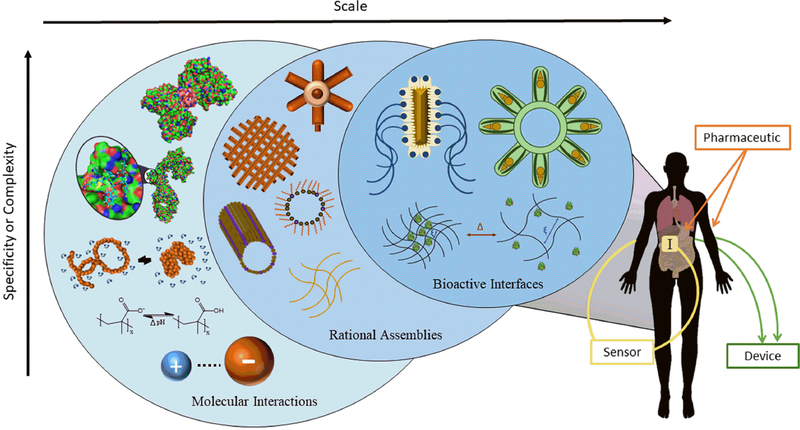Figure 1.2:
Next-generation material-tissue interfaces function through the synergy of multiple material-environment interactions. These interactions range from simple (anion-cation) to complex (protein-protein). Biomaterials are fabricated into rational assemblies by chemical crosslinking, self-assembly, patterning, or printing. The resulting cell-material or material-tissue interfaces can navigate the physiological environment and/or mimic native bioactivity as components of pharmaceutical formulations, biosensors, and bioinspired machinery.

